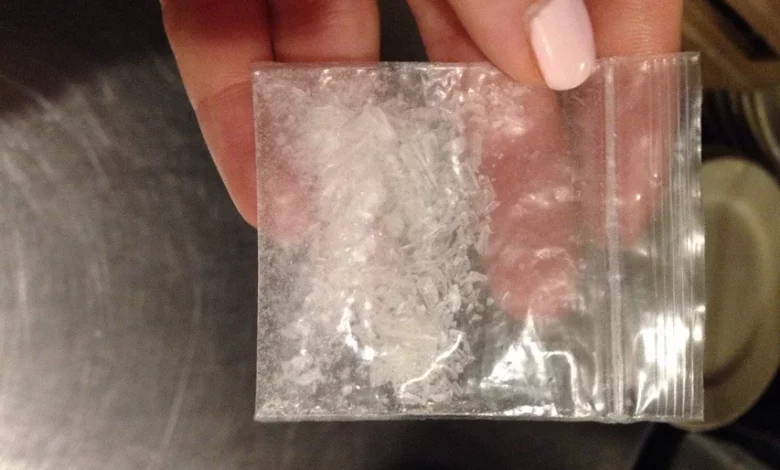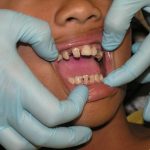What Does Meth Look Like?

Methamphetamine, commonly known as meth, is a highly addictive stimulant drug that has a long and complex history. Here is a brief overview of its history:
• Meth was first synthesized in Japan in 1919 by the chemist Akira Ogata. Its original purpose was as a nasal decongestant and bronchodilator.
• During World War II, methamphetamine was widely used by soldiers on both sides of the conflict to help them stay awake and alert. It was also used by pilots to help them focus during long missions.
• After the war, methamphetamine use spread to the civilian population in Japan, where it became a popular recreational drug.
• In the 1950s, methamphetamine use spread to the United States, where it was marketed as a prescription diet pill under the brand name Desoxyn.
• In the 1960s, methamphetamine became a popular recreational drug in the United States, particularly among college students and young adults.
• In the 1970s, the U.S. government classified methamphetamine as a Schedule II controlled substance, meaning it has a high potential for abuse and dependence but can still be prescribed by doctors for certain medical purposes.
• In the 1980s and 1990s, methamphetamine use and production in the United States exploded, particularly in rural areas. The drug was often made in home-based labs using easily available ingredients such as pseudoephedrine.
• In response to the methamphetamine epidemic, the U.S. government passed the Combat Methamphetamine Epidemic Act in 2005, which placed strict limits on the sale of pseudoephedrine and other ingredients used to make methamphetamine.
Today, methamphetamine remains a significant public health concern in many parts of the world, with high rates of addiction, overdose, and related health problems.
In the United States, the National Survey on Drug Use and Health (NSDUH) estimated that approximately 1.6 million people aged 12 or older used methamphetamine in 2020, which represents about 0.6% of the population.
The United Nations Office on Drugs and Crime (UNODC) estimated that there were 27 million methamphetamine users worldwide in 2019, with the highest rates of use in Asia, North America, and Oceania.
Methamphetamine use is particularly prevalent in some countries in Southeast Asia, such as Thailand and the Philippines, where it is often used as a cheaper alternative to other drugs like cocaine and heroin. Methamphetamine use has also been on the rise in some parts of Europe, particularly in Eastern and Central Europe.
What Does Meth Look Like?
Methamphetamine can come in different forms, and its appearance can vary depending on how it is produced. Some common forms of meth include:
Crystal Meth: Crystal meth is a highly pure form of methamphetamine that is usually produced in illegal laboratories. It appears as small, clear, crystal-like rocks or shards that resemble pieces of glass. Crystal meth is typically smoked or injected, and its high purity makes it extremely potent and addictive.
Powdered Meth: Powdered meth is a less pure form of methamphetamine that can be produced using a variety of methods. It appears as a fine, white or off-white powder, similar in appearance to cocaine or baking soda. Powdered meth can be snorted, smoked, or injected, and its potency and effects can vary depending on the purity of the drug.
Capsule Meth: Capsule meth is a form of methamphetamine that is made by mixing methamphetamine powder with other substances and packing it into capsules or tablets. The appearance of capsule meth can vary depending on the substances used to create it, but it may resemble prescription medications or dietary supplements.
Liquid Meth: Liquid meth is a rare form of methamphetamine that is produced by dissolving methamphetamine powder in a liquid, such as water or alcohol. Liquid meth can be consumed orally or injected, and its appearance can vary depending on the liquid used to dissolve it.
What Meth Addiction Looks Like
Methamphetamine (meth) addiction can have a wide range of signs and symptoms, which can vary depending on factors such as the frequency and amount of drug use, individual tolerance, and co-occurring mental or physical health conditions. Here are some common signs of meth addiction:
1. Physical changes: Meth use can lead to physical changes such as weight loss, dental problems (known as “meth mouth”), skin sores or lesions, and rapid aging.
2. Behavioral changes: People with meth addiction may exhibit erratic or compulsive behavior, such as obsessively picking at their skin or clothes, fidgeting or restlessness, or sudden mood swings.
3. Cognitive changes: Meth use can cause cognitive changes such as confusion, memory loss, and difficulty with decision-making or problem-solving.
4. Social isolation: People with meth addiction may withdraw from social activities and relationships, preferring to spend time alone or with other drug users.
5. Financial problems: Meth addiction can be expensive, and people with addiction may experience financial problems as they spend money on drugs instead of paying bills or meeting other obligations.
6. Legal problems: Meth use can lead to legal problems such as drug possession or trafficking charges, driving under the influence, or other criminal offenses.
7. Health problems: Meth use can have serious health consequences, including heart disease, stroke, seizures, and mental health problems such as anxiety, depression, and psychosis.
If you or someone you know is exhibiting signs of meth addiction, it’s important to seek help from a healthcare provider or addiction specialist. Meth addiction is treatable, and recovery is possible with the right support and resources.
What are the Dangers of Methamphetamine Use?
Methamphetamine use can have serious negative effects on a person’s health and well-being. Some of the short-term effects of meth use include:
• Increased heart rate and blood pressure
• Elevated body temperature
• Insomnia
• Loss of appetite and weight loss
• Irritability and aggression
• Paranoia and hallucinations
• Increased risk of HIV and other infectious diseases (for people who inject the drug)
Long-term meth use can also have serious negative effects on a person’s health, including:
• Addiction and dependence
• Cardiovascular problems, including heart attacks and strokes
• Respiratory problems, including lung damage and breathing difficulties
• Neurological problems, including memory loss, impaired judgment, and motor skill problems
• Psychiatric problems, including depression, anxiety, and psychosis
• Dental problems, including decay and tooth loss (due to the drug’s effect on saliva production)
Methamphetamine use can also have negative effects on a person’s personal and professional life, including financial problems, legal troubles, and damaged relationships.
What to Do if You or Someone You Know is Using Methamphetamine
If you or someone you know is using methamphetamine (Meth head), it is important to seek help as soon as possible. Methamphetamine addiction is a serious condition that requires professional treatment, and trying to quit on your own can be dangerous and difficult.
Some signs that someone may be using methamphetamine include:
• Unexplained weight loss
• Insomnia or sleeping problems
• Hyperactivity or talkativeness
• Unusual or erratic behavior
• Dilated pupils or rapid eye movement
• Burn marks or sores on the lips or fingers (from smoking meth)
• Track marks or injection sites on the arms or other parts of the body (from injecting meth)
If you suspect that someone you know is using methamphetamine, it is important to approach the situation with care and concern. Avoid being judgmental or confrontational, as this may cause the person to become defensive or shut down.
Instead, try to express your concerns in a non-judgmental way and offer your support and assistance in finding treatment options. It is important to remember that addiction is a disease, and the person using methamphetamine may need professional help to overcome it.
Treatment for Methamphetamine Addiction
Treatment for methamphetamine addiction typically involves a combination of behavioral therapies and medications to help manage withdrawal symptoms and cravings. Some common treatment approaches for methamphetamine addiction include:
• Behavioral Therapies: Behavioral therapies, such as cognitive-behavioral therapy (CBT) and contingency management, can help individuals identify and change negative patterns of thinking and behavior that contribute to addiction.
• Medications: Medications, such as bupropion and naltrexone, can help manage withdrawal symptoms and reduce cravings for methamphetamine.
• Support Groups: Support groups, such as Narcotics Anonymous (NA) and SMART Recovery, can provide ongoing support and encouragement for individuals in recovery from methamphetamine addiction.
It is important to seek professional help for methamphetamine addiction, as trying to quit on your own can be dangerous and difficult. Methamphetamine withdrawal can cause severe symptoms, such as depression, anxiety, and fatigue, that can last for several weeks or months.
Conclusion
Methamphetamine is a highly addictive and dangerous drug that can have serious negative effects on a person’s health and well-being. It comes in different forms, and its appearance can vary depending on how it is produced.
If you or someone you know is using methamphetamine, it is important to seek professional help as soon as possible. Methamphetamine addiction is a serious condition that requires professional treatment, and trying to quit on your own can be dangerous and difficult.
Treatment for methamphetamine addiction typically involves a combination of behavioral therapies and medications to help manage withdrawal symptoms and cravings. With the right treatment and support, it is possible to overcome methamphetamine addiction and lead a healthy, fulfilling life in recovery.





